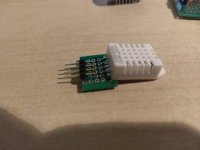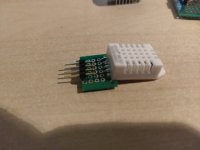Navigation
Install the app
How to install the app on iOS
How To Use Progressive Web App aka PWA On 420 Magazine Forum
Note: This feature may not be available in some browsers.
More options
You are using an out of date browser. It may not display this or other websites correctly.
You should upgrade or use an alternative browser.
You should upgrade or use an alternative browser.
Don't Panic, It's Organic! Jump In Everytime
- Thread starter
- #22
Teleon
Well-Known Member
what should I do if she isn't germinating?
looked again, nothing to see....
looked again, nothing to see....

- Thread starter
- #23
Teleon
Well-Known Member
When should I get concerned ? 

CraZysWeeD
Well-Known Member
I had seeds over a week in wet paper before they germ. It depends on heat an moist.
- Thread starter
- #25
Teleon
Well-Known Member
Okay...sorry I'm a bit excited 
The 2 other one's look very good so far!

The 2 other one's look very good so far!
CraZysWeeD
Well-Known Member
I know. You run and check every hour if there is some change... I recognize that more than well. 
Wait until you get them going and stay away from it a few days and get home and see the jungle...

Wait until you get them going and stay away from it a few days and get home and see the jungle...

- Thread starter
- #27
Teleon
Well-Known Member
hard for me, but I'll try 

- Thread starter
- #28
Teleon
Well-Known Member
Short update - the 2 lady's look good - just the one in the front, doesnt want to germinate... I'm considering about setting another seed in a jiffy, just in case this one wont germinate...what do u think?


How long has it been in there?
- Thread starter
- #30
Teleon
Well-Known Member
Since Monday evening (12.11.18)
You are surely sure you don't see any life?
- Thread starter
- #32
Teleon
Well-Known Member
yeah, I'm sure - there is nothing, even the dirt has not moved any way ... 

Go for a new one... Sry 

- Thread starter
- #34
Teleon
Well-Known Member
Go for a new one... Sry
sad, but okay - when i wait longer it would be a problem with the other 2 lady's - or?! (time in vegetation?)
And as I said yesterday - I tinkered a bit around and made my own wireless weahterstation for the tent
 nothing special, but it works fine - the temp / humidity u see is from my workbench, not in the tent ^^
nothing special, but it works fine - the temp / humidity u see is from my workbench, not in the tent ^^For those who are interested:
- D1 Mini (ESP -12F, Model ESP8266MOD)
- DHT 22 Temp / Humidity Sensor
- Few wires
- Standard grid hole PCB, two sided
- And a bit of coding

Did CraZysWeeD see this???
You two are a match
You two are a match
CraZysWeeD
Well-Known Member
Since Monday evening (12.11.18)
Yeah, go for a new one but let the other one sit a while. You never know.
And a bit of coding
How does the code look for the wifi instructions?
Did CraZysWeeD see this???
You two are a match



- Thread starter
- #37
Teleon
Well-Known Member
HahaDid CraZysWeeD see this???
You two are a match
 looks like
looks like The neat thing is, u only need a smartphone usb power supply and a usb mirco cable

Yeah, go for a new one but let the other one sit a while. You never know.
I will do !
How does the code look for the wifi instructions?

Code:
// Including the ESP8266 WiFi library
#include <ESP8266WiFi.h>
#include "DHT.h"
// Uncomment one of the lines below for whatever DHT sensor type you're using!
//#define DHTTYPE DHT11 // DHT 11
//#define DHTTYPE DHT21 // DHT 21 (AM2301)
#define DHTTYPE DHT22 // DHT 22 (AM2302), AM2321
// Replace with your network details
const char* ssid = "YOUR SSID";
const char* password = "YOUR PW";
// Web Server on port 80
WiFiServer server(80);
// DHT Sensor
const int DHTPin = 0;
// Initialize DHT sensor.
DHT dht(DHTPin, DHTTYPE);
// Temporary variables
static char celsiusTemp[7];
static char fahrenheitTemp[7];
static char humidityTemp[7];
// only runs once on boot
void setup() {
// Initializing serial port for debugging purposes
Serial.begin(115200);
delay(10);
dht.begin();
// Connecting to WiFi network
Serial.println();
Serial.print("Connecting to ");
Serial.println(ssid);
WiFi.begin(ssid, password);
while (WiFi.status() != WL_CONNECTED) {
delay(500);
Serial.print(".");
}
Serial.println("");
Serial.println("WiFi connected");
// Starting the web server
server.begin();
Serial.println("Web server running. Waiting for the ESP IP...");
delay(10000);
// Printing the ESP IP address
Serial.println(WiFi.localIP());
}
// runs over and over again
void loop() {
// Listenning for new clients
WiFiClient client = server.available();
if (client) {
Serial.println("New client");
// bolean to locate when the http request ends
boolean blank_line = true;
while (client.connected()) {
if (client.available()) {
char c = client.read();
if (c == '\n' && blank_line) {
// Sensor readings may also be up to 2 seconds 'old' (its a very slow sensor)
float h = dht.readHumidity();
// Read temperature as Celsius (the default)
float t = dht.readTemperature();
// Read temperature as Fahrenheit (isFahrenheit = true)
float f = dht.readTemperature(true);
// Check if any reads failed and exit early (to try again).
if (isnan(h) || isnan(t) || isnan(f)) {
Serial.println("Failed to read from DHT sensor!");
strcpy(celsiusTemp,"Failed");
strcpy(fahrenheitTemp, "Failed");
strcpy(humidityTemp, "Failed");
}
else{
// Computes temperature values in Celsius + Fahrenheit and Humidity
float hic = dht.computeHeatIndex(t, h, false);
dtostrf(hic, 6, 2, celsiusTemp);
float hif = dht.computeHeatIndex(f, h);
dtostrf(hif, 6, 2, fahrenheitTemp);
dtostrf(h, 6, 2, humidityTemp);
// You can delete the following Serial.print's, it's just for debugging purposes
Serial.print("Humidity: ");
Serial.print(h);
Serial.print(" %\t Temperature: ");
Serial.print(t);
Serial.print(" *C ");
Serial.print(f);
Serial.print(" *F\t Heat index: ");
Serial.print(hic);
Serial.print(" *C ");
Serial.print(hif);
Serial.print(" *F");
Serial.print("Humidity: ");
Serial.print(h);
Serial.print(" %\t Temperature: ");
Serial.print(t);
Serial.print(" *C ");
Serial.print(f);
Serial.print(" *F\t Heat index: ");
Serial.print(hic);
Serial.print(" *C ");
Serial.print(hif);
Serial.println(" *F");
}
client.println("HTTP/1.1 200 OK");
client.println("Content-Type: text/html");
client.println("Connection: close");
client.println();
// your actual web page that displays temperature and humidity
client.println("<!DOCTYPE HTML>");
client.println("<html>");
client.println("<head></head><body><h1>ESP8266 - Temperature and Humidity</h1><h3>Temperature in Celsius: ");
client.println(celsiusTemp);
client.println("*C</h3><h3>Temperature in Fahrenheit: ");
client.println(fahrenheitTemp);
client.println("*F</h3><h3>Humidity: ");
client.println(humidityTemp);
client.println("%</h3><h3>");
client.println("</body></html>");
break;
}
if (c == '\n') {
// when starts reading a new line
blank_line = true;
}
else if (c != '\r') {
// when finds a character on the current line
blank_line = false;
}
}
}
// closing the client connection
delay(1);
client.stop();
Serial.println("Client disconnected.");
}
}Here u go

- Thread starter
- #38
Teleon
Well-Known Member
Btw u can write a lot more stuff in it, for example a power saving option...that the D1 is nearly off everytime, just awake, make a measurement and go to sleep again....
It might also be cool to "store" the data - that the D1 send this to a MySQL DB...then u also could do a graph to see it over the hole day / night .... I think that would be the thing I will add
It might also be cool to "store" the data - that the D1 send this to a MySQL DB...then u also could do a graph to see it over the hole day / night .... I think that would be the thing I will add

CraZysWeeD
Well-Known Member
Here u go
Crazy code.
 So the server is run by Arduino? And then u just point your browser to Arduinos ip? But how do you know Arduinos ip, is than printed out with serial then?
So the server is run by Arduino? And then u just point your browser to Arduinos ip? But how do you know Arduinos ip, is than printed out with serial then?Btw u can write a lot more stuff in it, for example a power saving option...that the D1 is nearly off everytime, just awake, make a measurement and go to sleep again....
It might also be cool to "store" the data - that the D1 send this to a MySQL DB...then u also could do a graph to see it over the hole day / night .... I think that would be the thing I will add
Smart.

- Thread starter
- #40
Teleon
Well-Known Member
Crazy code.So the server is run by Arduino? And then u just point your browser to Arduinos ip? But how do you know Arduinos ip, is than printed out with serial then?
Crazy? Hmmmm no not really
 Yeah, the webserver is run by the arduino itself, u can get the IP from the Serial output or u just look in your router ^^
Yeah, the webserver is run by the arduino itself, u can get the IP from the Serial output or u just look in your router ^^As I thought, the connector from the sensor are to small to fit good in the socket...so I made a proper socket for it
 Now it goes into the tent and I will tinker the DB
Now it goes into the tent and I will tinker the DB 




